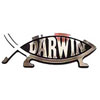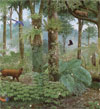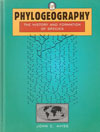We have moved to a new server!
Since March 2014, this website has been moved to this new server: http://web.ntnu.edu.tw/~treehopper/. This page will not be updated anymore. Please update your browser’s bookmark or the web links.
Undergraduate
Graduate
Evolutionary Biology 2009 Spring

Evolution The Triummph of an Idea (book cover from Zimmer 2004).
Our Earth is covered by an incredible diversity of organisms. By what processes have this diversity been produced? Why do some organisms have such a good FIT to the environment in which they live? Where did all the millions of living and extinct species come from?
The patterns and processes that produce this diversity of life are the subject matter of this course. This course is designed to introduce students to the basics of evolutionary biology. The course will cover topics including: natural selection, earth history, systematic biology, population genetics, fitness and adaptation, sexual selection, speciation, long-term trends in evolution, evolution of genes and genomes, evolution and development, and extinction. Additionally, the course will explore the applications of evolutionary biology to the fields of medicine, agriculture, psychology, culture studies, development, and conservation biology.
Bulletin Board
(Please send errors, questions, or messages to Chung-Ping Lin at treehops@thu.edu.tw)
Entomology
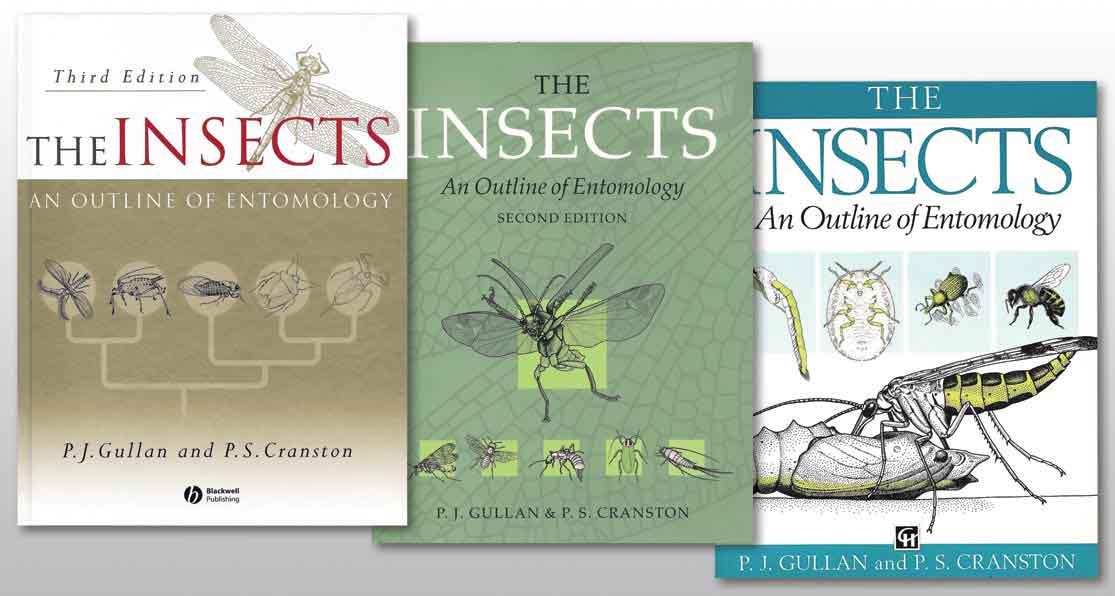
Various editions of the insect textbooks.
Insects are the most abundant and diverse animals on earth. Insects account for roughly 5 out of every 6 species of land animals. Is it just an accident that insects are so numerous or is there some reasons that can explain their incredible diversity on earth? If insect diversity has not arisen by chances, can we identify and study the features of their anatomy, reproduction, physiology, development, and life history traits that can account for their diversity? What are the major evolutionary events in insect diversification? A major and unified theme of the course will be to investigate why it is that insects are such an important part of the natural world.
The purpose of this course is to introduce undergraduate students to the bewildering diversity of insect forms and habits through lectures, films, readings, and laboratories. This course will explore the bizarre biology of insects by examining their evolutionary history, anatomy, development, feeding habits, life-history strategies, behavior, and their interactions with other organisms and humans (both positive and negative). Required field collecting trips and laboratory sections will provide hands-on opportunities for examining these amazing animals.
Bulletin Board
(Please send errors, questions, or messages to Chung-Ping Lin at treehopper@ntnu.edu.tw)
Insect Natural History in Fusan
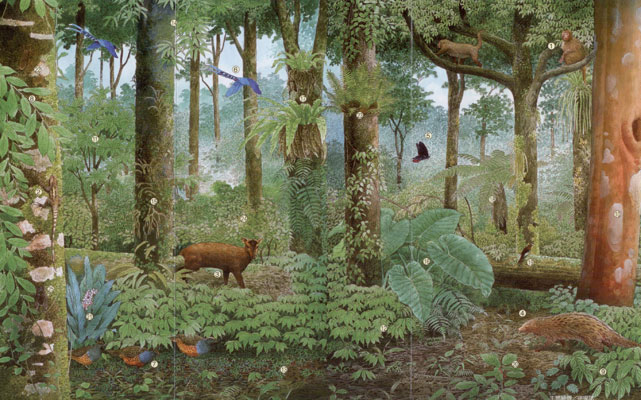
Fusan forest in the day time (photo from promotional brochure No. 034).
Bulletin Board
(Please send errors, questions, or messages to Chung-Ping Lin at treehopper@ntnu.edu.tw)
- 2009/04/28 New !
- 2009 summer student list and enroll priority in 2010 summer, download file (in Chinese)
- 2009/04/22
- Classes will be held in Fusan Botanical Garden during the first week of the summer in 2009.
Fusan Botanical Garden
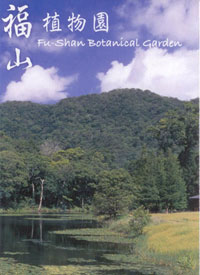
Aquatic plant pond in Fusan (photo from promotional brochure No. 034).
生態學
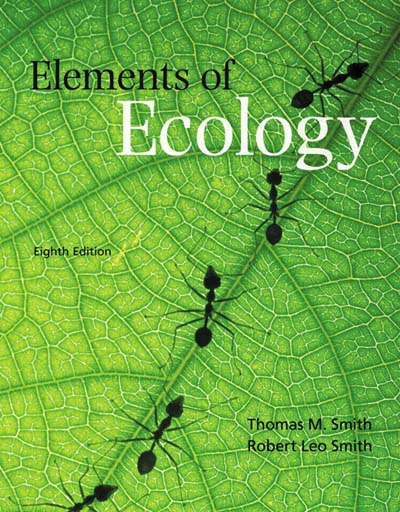
Elements of Ecology (book cover from Smith & Smith 2012, 8th).
Introduction
TBA
Bulletin Board
(Please send errors, questions, or messages to Chung-Ping Lin at treehopper@ntnu.edu.tw)
Systematics & Comparative Methods
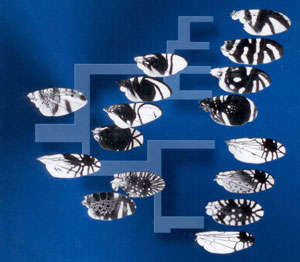
Image after the cover of Endless Forms: Species And Speciation 1998.
How do we explain the diversity of life on earth? What are the processes that have produced this diversity and how can we study them? The comparative method is a powerful tool to address a variety of the most significant questions in organismal biology including speciation, adaptation and co-evolution: What mode of speciation has occurred in the evolution of a lineage? How does one recognize convergent evolution, or divergent adaptation? Why are species X and Y associated in the same habit?
Systematics (phylogenetics) and comparative biology has long been the cornerstone of ecological and evolutionary research. This research program began with early 18th and 19th century naturalists, who observed large numbers of organisms from populations, geographic regions, and species, described the emergent patterns of various features, and proposed ecological and evolutionary explanations for those patterns. The phylogeny-based 'comparative methods' for identifying patterns across species has undergone a rapid development in recent years. This method is a set of statistical analyses for reconstructing ancestral characters, testing adaptive hypotheses, and inferring the role of evolutionary process in shaping the phenotypic and ecological traits.
This course is designed to introduce graduate students to the new comparative methods in the context of specific biological questions. The course will teach students how to interpret published results in systematics and evolution literature that use these methods, and help student apply these methods to their own research questions. These goals will be accomplished through lectures, demonstrations and practices with computer programs (laboratory), and discussions in class using student's projects.
Bulletin Board
(Please send errors, questions, or messages to Chung-Ping Lin at treehopper@ntnu.edu.tw)
Phylogeography
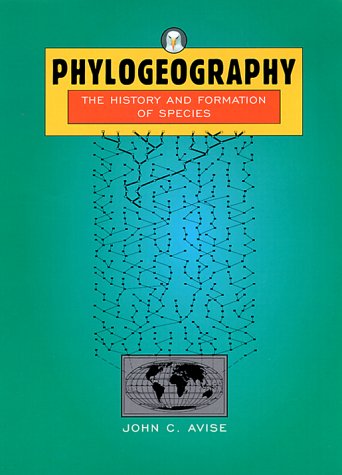
Image after the cover of Phylogeography, Avise 2000.
Introduction
Phylogeography is a discipline investigating the relationships between gene genealogies, phylogenetics, and geography. The word 'phylogeography' was first introduced in 1987 by John Avise, and since the scientific literature has reflected an exploding interest on this topic. The study of phylogeography grew out of the observation that mitochondrial DNA lineages in natural populations often display distinct geographic patterns. The goal in phylogeographic studies is to use gene trees to infer the historical and contemporary forces that have produced the current genealogical architecture of populations and closely related species. In recent years, the field of phylogeography has expanded to include assessments of nuclear markers, as well as cytoplasmic genomes.
Recent phylogeographic studies explored the relationships among gene trees, population demography, organismal history and diversification, natural selection and the process of speciation. The field of phylogeography has deep connections to molecular evolutionary genetics, coalescent theory, natural history, population biology, paleontology, and historical geography. The study of phylogeography captures the conceptual and empirical richness of the field, and the sense of genuine innovation that phylogeographic perspectives have brought to evolutionary studies. This course will introduce graduate students to the field of phylogeogrpahy and its application in research topics by discussing current theoretical and empirical literature of the field. Computer programs for analyzing phylogeographic data will be introduced and used for carrying out homework assignments and research projects.
Bulletin Board
(Please send errors, questions, or messages to Chung-Ping Lin at treehopper@ntnu.edu.tw)
Graduate Seminar
![]()
This course is designed to expose students to a variety of important research topics in biodiversity, and to provide students with trainings in critical thinking and science communication.
Bulletin Board
(Please send errors, questions, or messages to Chung-Ping Lin at treehopper@ntnu.edu.tw)
